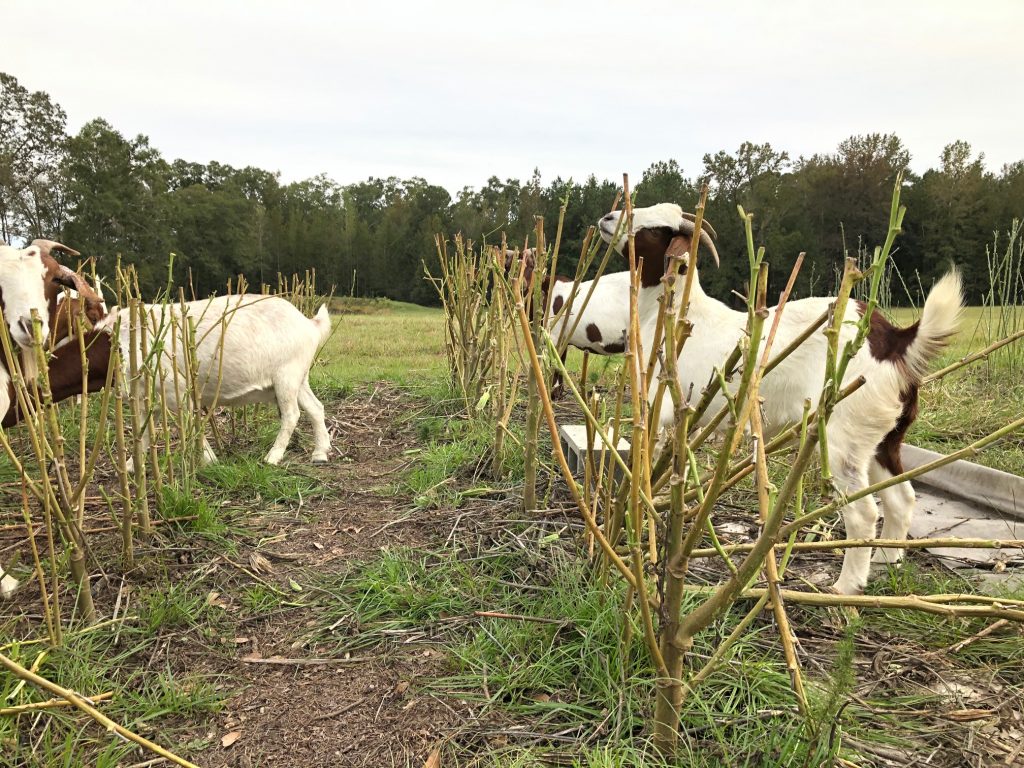
By Kristin Woods
Conservation funding from the U.S. Department of Agriculture’s Natural Resources Conservation Service (USDA NRCS) can help growers implement good land stewardship practices in an economically sustainable way. While these practices may affect pathogen movement in the farm environment, they are not meant to reduce produce safety risk. Additional consideration must be given around how implementing specific practices could affect the safety of produce.
MICROIRRIGATION
The USDA NRCS Environmental Quality Incentives Program (EQIP) can provide cost-share reimbursement for the installation of microirrigation. This practice reduces overall water use compared to overhead irrigation by limiting water delivery directly to the roots of the plant and reducing evaporation. On some crops, microirrigation also reduces plant diseases caused by excess moisture accumulating on the leaves.
From a food-safety perspective, microirrigation can reduce risk. For crops with the harvestable portion above ground, limiting water contact with that portion reduces the chance of pathogens from the water attaching to the surface of the produce. Additionally, the use of microirrigation can minimize the chances of water contacting produce by reduced splashing from the direct water to root application. If you are getting water from an open water source such as a pond, river or canal, the food-safety benefits are even greater since these water sources can be more likely to carry pathogens.
When using surface water, a filter needs to be installed to prevent debris and solids from the water source from clogging irrigation lines. Because the use of water is reduced with microirrigation, this sometimes makes the use of novel methods for irrigation water treatment more feasible, such as UV light, which is more easily implemented with reduced flow volumes.
ROTATIONAL GRAZING
Growers operating diversified farms with both produce and animals can benefit from USDA NRCS EQIP and Conservation Stewardship Program (CSP) funds to help implement rotational grazing. While EQIP provides a one-time cost-share reimbursement, CSP provides ongoing payments based on the specific practices and the acreage that those practices are applied to.
In the case of rotational grazing, EQIP might help with the upfront capital cost of cross fencing, while CSP helps a rancher enhance soil health and forage quality long-term. Animals can graze primary crop debris, graze cover crops and simultaneously apply organic soil amendments (manure) to a growing area. To maximize animal production and forage, carefully considering the number of animals and the available forage throughout the rotation is important.
Because forage recovers faster when not overgrazed, land that is properly rotationally grazed can be more productive overall. For goats, rotational grazing also has the added benefit of helping reduce parasite loads, since the barber pole worm larvae, commonly affecting goats, resides primarily in the bottom three inches of grass.

Whenever animals are present on a farm with fresh produce, there are additional food-safety concerns. Adherence to the National Organic Program 90/120 rule where manure is applied at least 120 days prior to harvesting crops where the edible portion of the crop has soil contact and 90 days prior to harvesting of other crops will reduce risk.
Adjacent to animal production areas, you might also consider short vegetative buffers that will help reduce manure runoff into growing areas or water sources. Additionally, woody buffers may help with wind spread of pathogens and will provide habitat for pest predators and pollinators.
CONSERVATION BUFFERS
Conservation buffers are also supported by EQIP, CSP and several other USDA programs such as the Conservation Reserve Program, Wildlife Habitat Incentives Program and Wetlands Reserve Program. This broad support is due to the expansive benefits of conservation buffers to water quality, erosion preservation, and support for pollinators and insect predators.
Conservation buffers are small strips of land strategically located to catch pollutants from entering water sources and to reduce erosion. According to NRCS, buffers can remove up to 50% of nutrients and pesticides from runoff, up to 60% of pathogens and up to 75% of sediment. Smart implementation also provides a diversity of habitat to support native plant, animal and microbial species, ultimately improving the environment for pollinators and pest predators. The ability of buffer strips to catch nutrient runoff and control erosion via wind spread and water runoff potentially reduces food-safety risk by reducing the physical movement of manure and general spread of pathogens in a farm environment.
FARM INNOVATION PROJECT
In December 2020, Alabama Extension, along with partners from the Deep South Food Alliance, Alabama A&M University, Fort Valley State University, Alcorn State University and the National Farmers Union, piloted a hands-on training program that will rollout across Mississippi, Alabama and Georgia this year. The program, geared toward small and limited resource growers, aims to improve farm viability by helping growers balance food safety and conservation concerns.
Known as the Farm Innovation Project, the program will bring hands-on training on water conservation, water quality, soil health, rotational grazing and produce safety practices. It will also bring access to technology-based resources to farms and rural communities. Additionally, participants in the program will learn about USDA conservation funds available to help implement practices on their farms.
To find out more about this project funded by the USDA National Institute of Food and Agriculture, go to aces.edu/farm_innovation.
ACCESSING FUNDS
The first step in accessing funds to implement conservation practices is to visit your local USDA Farm Service Agency (FSA) office to register and receive an FSA farm number. Once registered, visit your local NRCS office to learn about conservation programs in your area. Due to the pandemic, be sure to call ahead and make an appointment. More information on accessing NRCS programs can be found at nrcs.usda.gov.
Kristin Woods is a regional Extension agent with the Alabama Cooperative Extension System.









